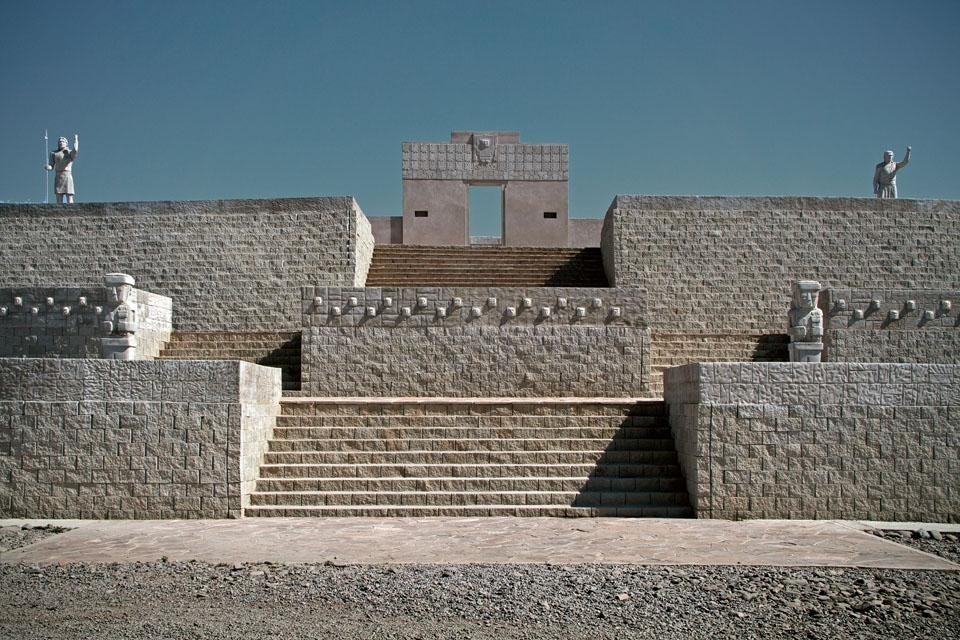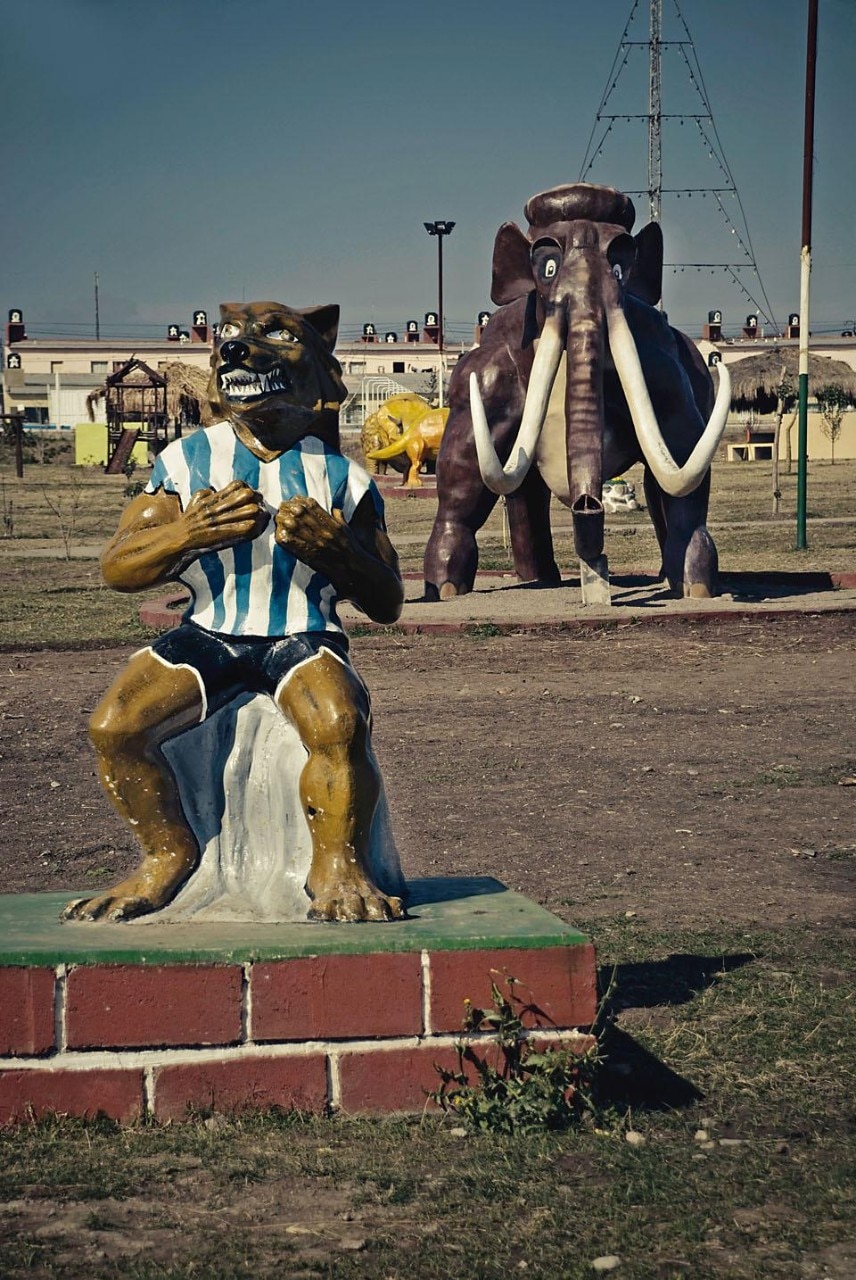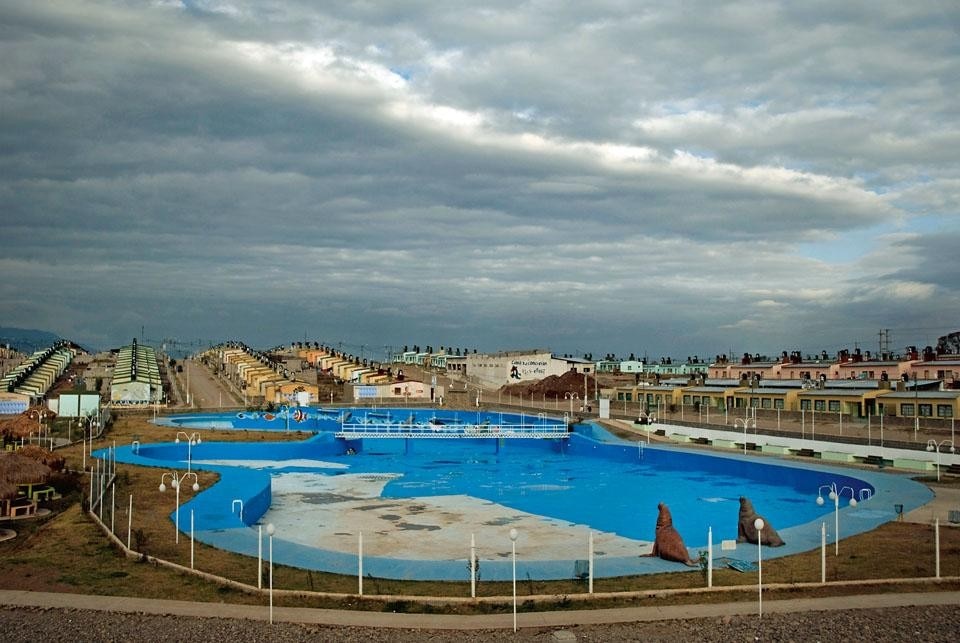At the entrance to Alto Comedero is a sign that reads "Bienvenida al Cantri". That "cantri" is a phonetic misspelling of "country", but the joke is no worse for it. "Welcome to the Country Club." Driving in, you'll encounter a vast swimming pool, a Jurassic-themed playground and a replica of the Incan temple of Tiwanaku. These extravagant amenities nestle among row upon row of singlestorey houses. From a distance the terraces resemble a piece of working-class Liverpool, except here, in northwest Argentina, what appear to be chimneys are rainwater tanks branded with the face of Che Guevara. This is not really a country club; this is social housing—social housing as you've never seen it.
Alto Comedero is the largest of the communities built by a social movement called Tupac Amaru. Based in the city of San Salvador de Jujuy, where Argentina approaches the border of Bolivia, Tupac Amaru claims to represent the neediest in society, providing housing, education, medical care or whatever else they require—it might be a meal or a pair of shoes. As well as its own housing system, it has its own factories, schools and hospitals—a degree of self-sufficiency that has led some to conclude that Tupac Amaru is effectively a state within a state. It has more than 70,000 members—or followers, depending on how one defines them—made up mostly of indigenous Kolla Indians. A revolutionary movement with quasisocialist ideals, Tupac Amaru is known for its radical politics and for the efficacy of its direct action—when the movement decides to demonstrate, it can paralyse the streets of Jujuy, a fact that has turned many of the local middle class against them.
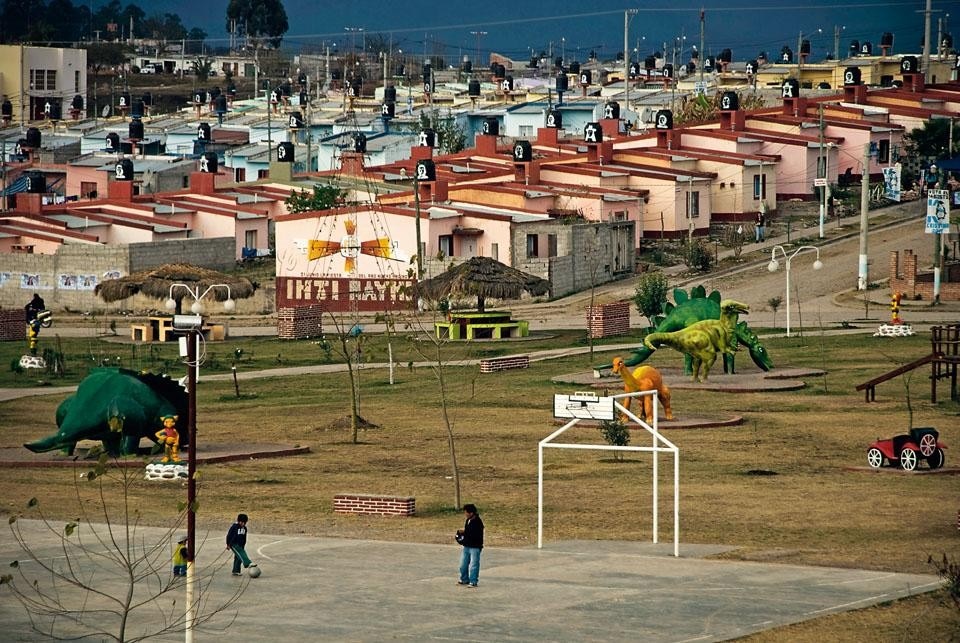
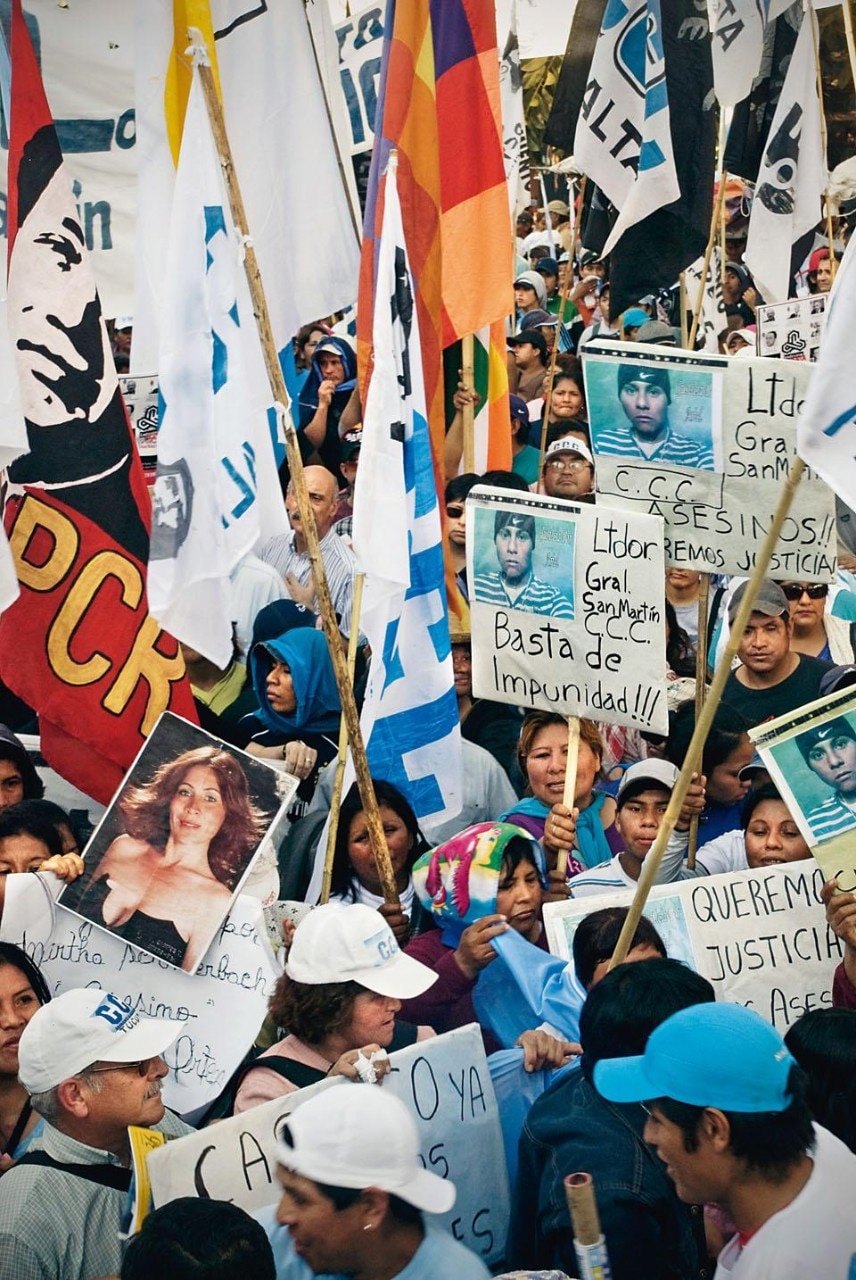
Tupac Amaru has built thousands of houses for the poorest people in this region. It began with a mere 148, when Milagro took a punt that even she, with no construction experience, could make better use of government housing subsidies than the corrupt local politicians. Today she controls government funding worth 1,000 houses per year. But her real genius is in how she spends that money. Tupac Amaru created its own brick and steelwork factories, making the construction process that much more efficient. Receiving 93,000 pesos (23,000 dollars) per house—a third less than volume housing companies—it builds those houses four times faster than the private sector. One reason is that it employs the poor as a labour force, which must make this one of the few schemes in the world where you can be paid to build your own house—and then be given it for free.
It is difficult to understand the particular urbanism that Tupac Amaru has created— that combination of exurbia, Disneyesque theme park and radical socialism.
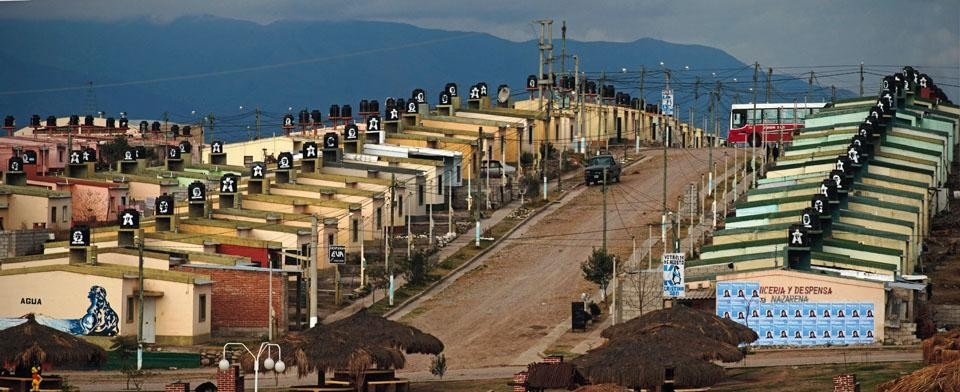
The theme-park urbanism of Alto Comedero is equally sui generis. What Tupac Amaru saves by creating its own factories and by cutting out all the middlemen—the developers, construction companies and architects—it can reinvest into the community as grand social gestures. It was news of the swimming pools that first brought me to Jujuy—the idea that with a simple gesture you could make the poor feel rich. And yet I'd expected some standard rectangular affair, not the amoeboid aquatic park that awaited me in Alto Comedero, with its giant penguin figures and walruses. Seeing the glee with which a boy dive-bombed that water was enough to validate the entire concept.
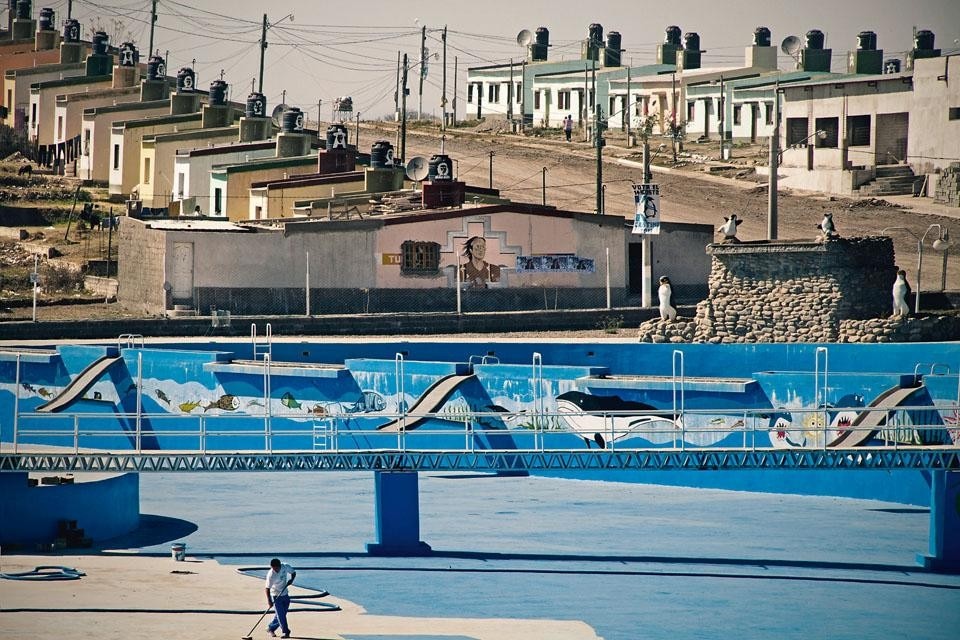
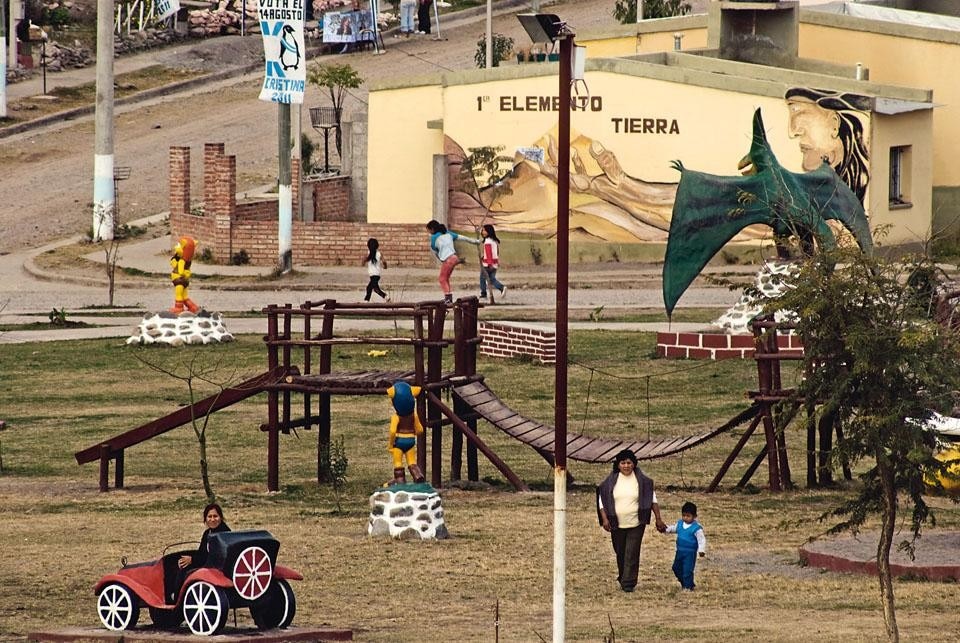
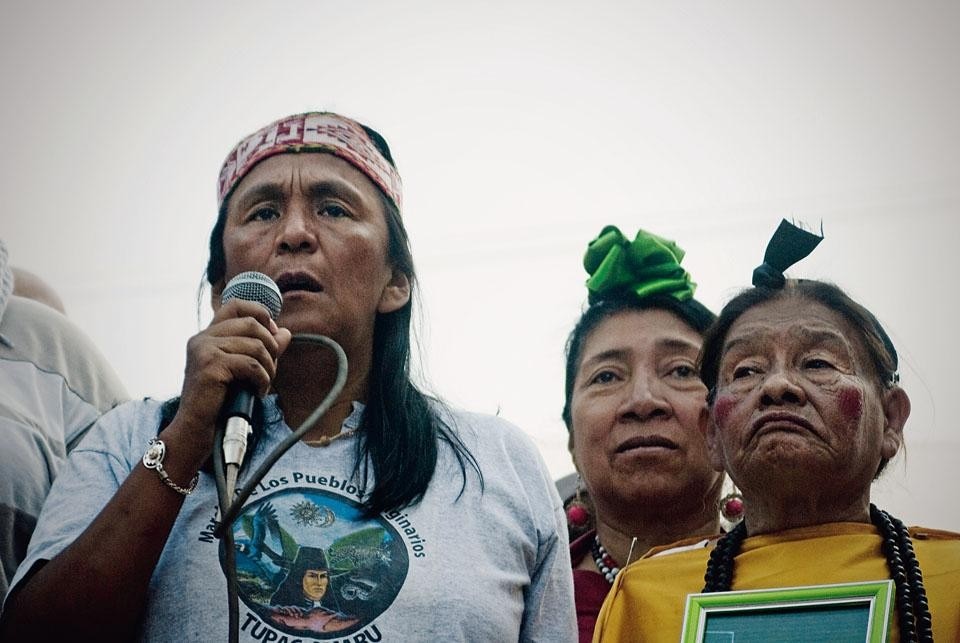
—Justin McGuirk,
Journalist and critic
